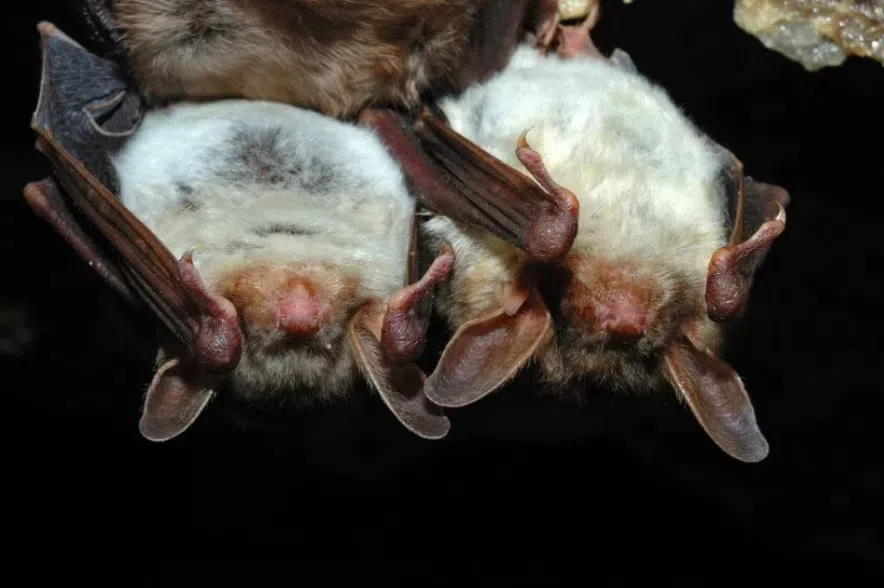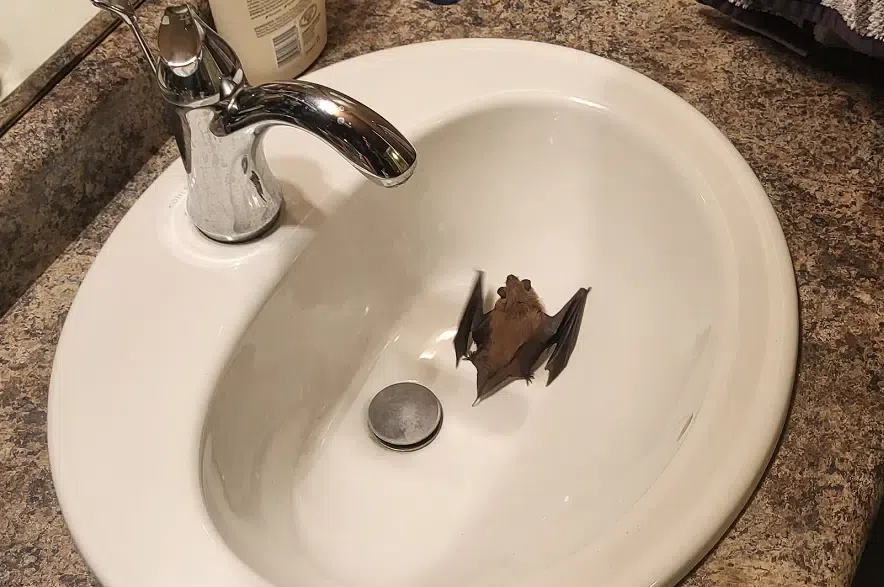A rabies-carrying bat has been identified in Warman, and the city is advising residents to use extra caution with pets and kids.
“If you see a bat during daylight hours, keep your distance and contact animal control immediately,” the city advised in a social media post.
Read more:
- Health officials warn more people are being bitten by bats across Sask.
- Environment ministry offers tips on dealing with bats, as encounters increase
- ‘Game changer’: Salthaven West sees success with bat hibernation program
“If you should come into contact with a bat, please seek immediate medical attention.”
A spokesperson for the city said a bylaw officer found a deceased bat in a backyard on Wednesday, and turned it in for testing because it looked unusual.
No bites or injuries have been reported, but the spokesperson advised pet owners to ensure all rabies vaccinations are up to date and asked anyone who finds a deceased bird or bat to contact a city bylaw officer.
Earlier this month, Dr. Simon Kapaj, a medical health officer with the Saskatchewan Health Authority, said there has been an increase in the number of bat bites and scratches reported across the province recently.
Kapaj said bats carry various infections, including rabies, a serious virus that can be fatal. According to the Government of Canada’s rabies-monitoring website, only two rabies cases of rabies have resulted in a death since 1924.
Kapaj stressed the importance of getting rabies tests done to prevent a serious infection.
“If you suspect you or your child have been bitten, scratched, or have been sleeping with a bat in your room, seek medical care and rabies shots will be provided if appropriate,” he said.
Kapaj said many individuals who have been bitten did not handle bats safely when trying to capture them.
When people are capturing or handling an individual bat, they should never touch bats with bare hands and they should always wear thick gloves, which is the easiest way to prevent rabies exposure.
“Unless you know what you’re doing, it’s better to let the bats go away, open the windows and that’s the safest,” Kapaj said.
Even if a bat lands on your body, Kapaj said the bite can be too small to identify, and reminds the community to be careful.
He also noted that because testing bats without safe capture methods can be difficult, if the bat involved in the incident is not available then doctors will administer rabies shots.
Tips for dealing with bats
Speaking to 650 CKOM last week, Erin Swerdfeger, a species at risk zoologist with the Ministry of Environment, said there are a few ways people can deal with bats on their property.
If someone finds a single bat in their house, which is common during this time of year, Swerdfeger said it’s an easy fix.
“If you’re just in a room and there’s access to the outside through a window or a door, you can shut all the other doors and windows in the house,” she said. “Leave that one access point open, turn off the lights, turn off things like ceiling fans that can be harmful, and just let the bat leave on its own.
If a bat is in an area of the home where it’s unable to fly out on its own, Swerdfeger suggests using a box to catch it.
“Wait till (the bat) landed, and then poke air holes in a box,” she said. “We recommend wearing thick leather gloves and using this container. You can gently place it over the bat, and then slide a piece of cardboard gently underneath, sort of like the idea of trapping a spider under a glass.”
Swerdfeger said the best time to release a bat is at dusk.
The other most common occurrence is a group of bats in a barn or a similar structure. Swerdfeger said May and September are the best months to evict a bat.
“We recommend working with a licensed pest control operator,” she said. “They know what to look for in a building, they know where to go, and they can put up what’s called an exclusion device, or a bat cone, which is essentially a one-way exit.”
That allows a bat to leave on its own—which it does most nights—but it won’t allow them to re-enter the property, according to Swerdfeger.
“After all the bats have been confirmed to be out of that area, the pest control operator can go in and seal off those areas permanently,” she said. “Sometimes this can take a few tries, but that’s the easiest and safest way to get that out of your house.”
Bats are a protected species, which means they can’t just be killed.
“If you wanted to disturb their place of habitation or kill them, then you would need a license from the Ministry of Environment,” Swerdfeger said. “Where they live and the bats themselves are protected.”
— With files from 650 CKOM’s Mia Holowaychuk and Will Mandzuk












